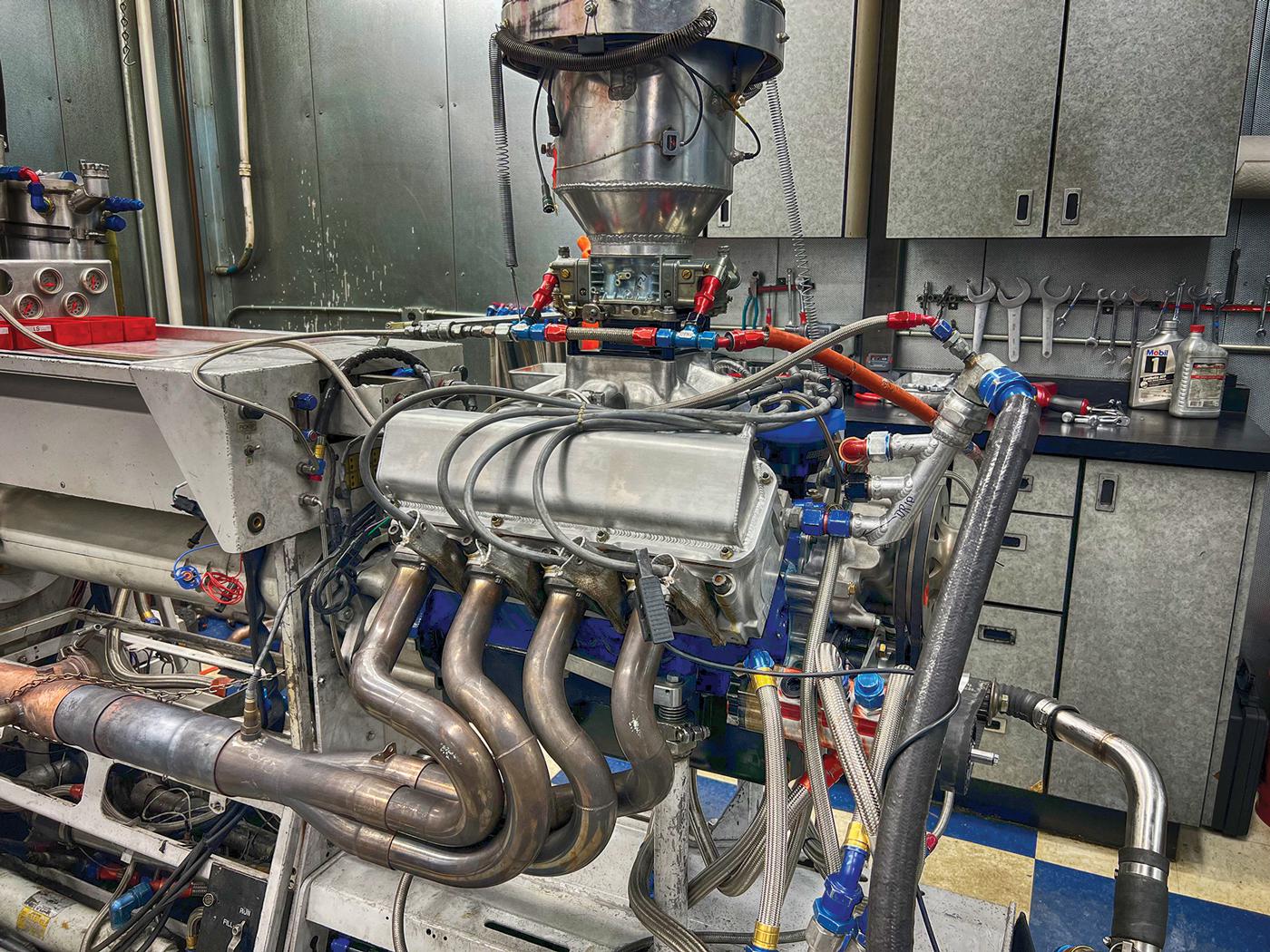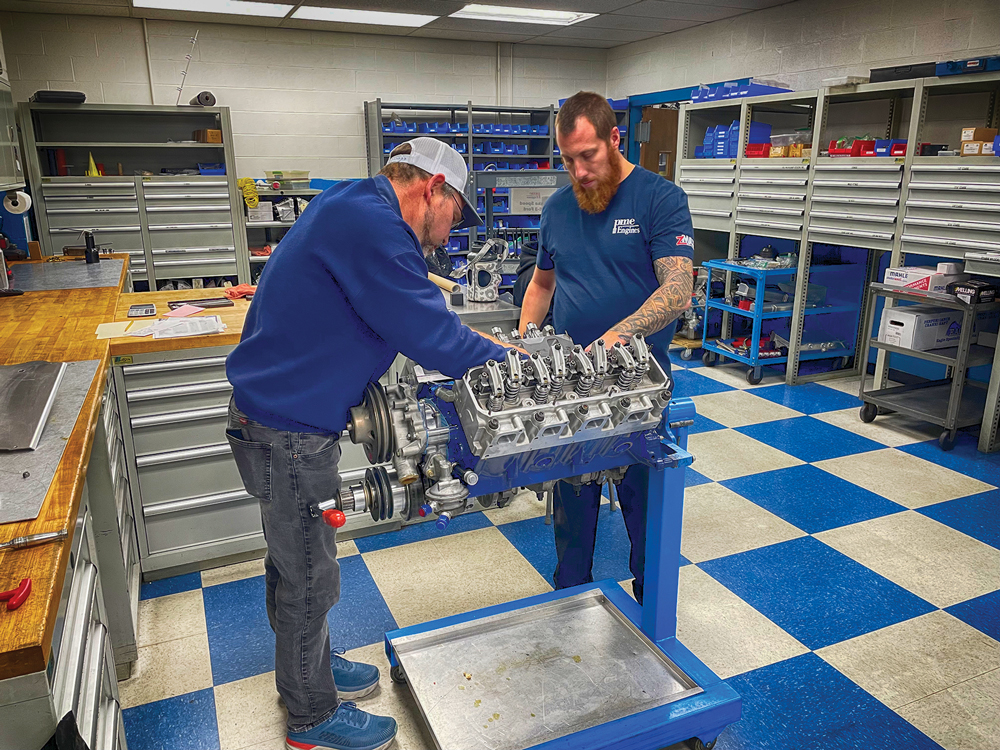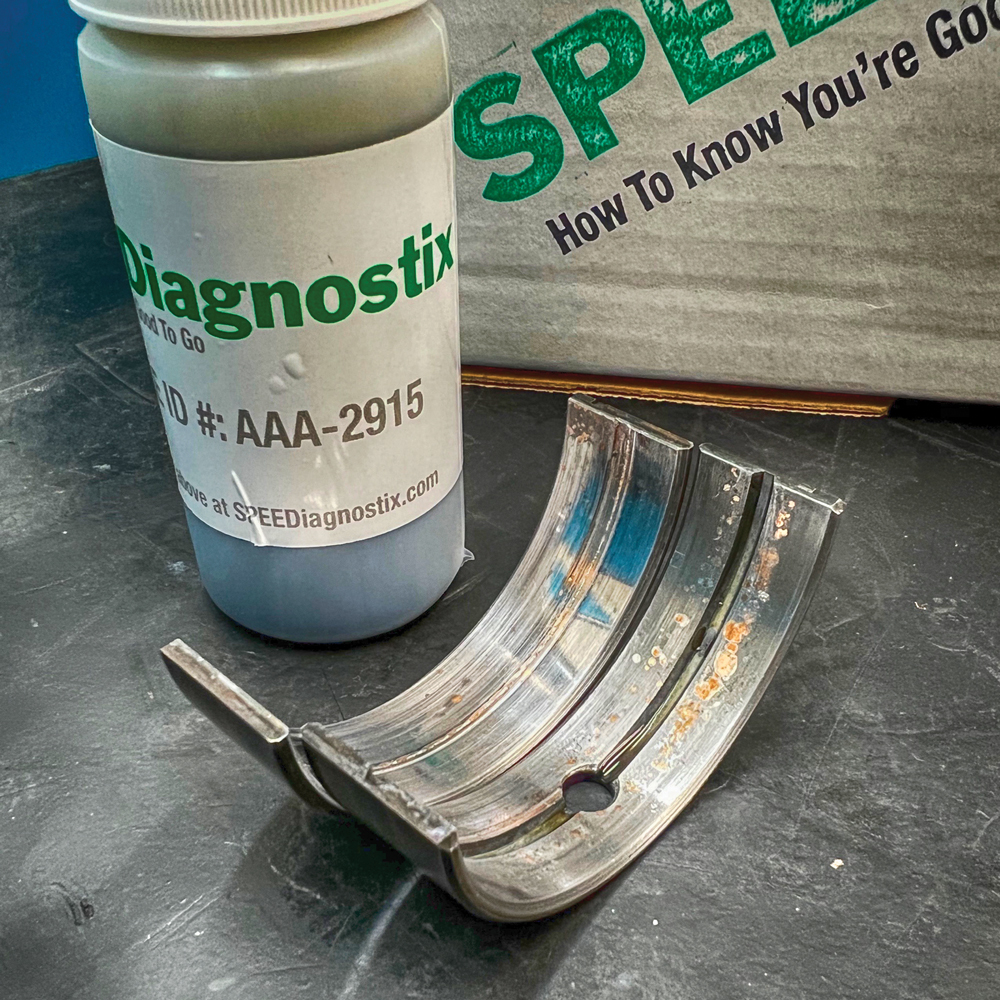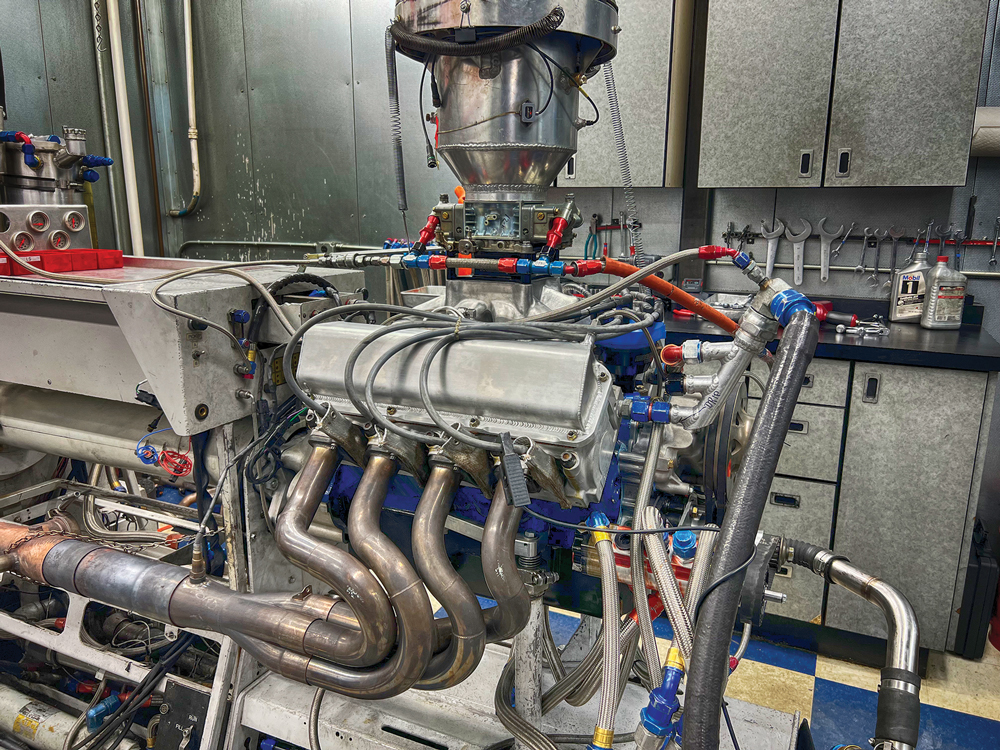PRI Tech: Used Oil Analysis

What can be revealed by performing a used engine oil analysis.
With the cost of engines increasing and the lead time on parts getting longer, there may be no better time to start utilizing used oil analysis to protect these valuable assets.
Used oil analysis quickly and easily reveals the health of an engine. By taking a three-ounce sample of used oil from your engine, the experienced analyst can determine the amount of wear, metals, fuel dilution, and other contaminants in the oil. In fact, every Formula 1 team analyzes their oil at the race track to know when an engine or gearbox should be changed.
The process is as simple as capturing the sample in the bottle provided in the oil analysis kit, completing a form with the details of the sample, dropping the sample in the mailbox, and reading the report that comes via email. Those results can come in as soon as three days if needed. If everything in the report has green check marks, then you are good to go. If not, then you know where to look for a potential problem. It is that easy and effective.
How can used oil analysis pay for itself? By detecting particles and contaminants that are smaller than 10 microns (a human hair is 40 microns in diameter), used oil analysis can see things that we can’t with our eyes.

Because motor oil moves all through the engine, picking up “souvenirs” along the way, used oil analysis takes advantage of that fact and counts these souvenirs, so it can tell us, for example, if the bearings are wearing by counting the parts per million of the bearing materials (copper, tin, and lead) in the used oil.
In fact, a recent oil analysis revealed why one of my dad’s (Lake Speed) old engines had overheated during a vintage stock car race at Daytona in 2003. It also helped explain a corresponding loss of 200-plus horsepower when we revisited the engine last summer.
Case Study:
Dad’s Engine
Even though he was able to nurse it home for the win, my dad and his team knew that his Ford C-3 NASCAR engine was in rough shape.
As mentioned, last summer we came across the dyno sheets for that engine, and I couldn’t help wondering if it would still run after sitting for two decades. And if it did, how much power would it make?
The dyno sheets from 20 years ago showed the engine made a peak of 690 hp at 7,800 rpm. When we put it back on the dyno last year it only made 477 hp at 7,700 rpm, and it “pegged the needle” on the blow-by gauge.
So, it was indeed damaged. But where did more than 200 hp go?
We took the engine off the dyno and pulled it apart that day, but we couldn’t find any “smoking gun” that would explain why the engine had overheated or why it had lost so much power.
Our next line of attack was to see whether a refresh would bring the engine’s power back. Although we kept the same heads, manifold, block, crank, and rods, we did “modernize” the hone, pistons, pistons rings, and valvetrain. We also ditched the old conventional 20W-50 oil for a modern 5W-20 synthetic racing oil.

After some honing work to create the specific plateau finish required for our TiN coated rings, we put our engine back on the dyno, installed some break-in oil, and began the break-in process to properly seat the piston rings.
After 30 minutes and a few break-in pulls, the engine was making more than 750 hp. With a few more tweaks—race carburetor, race fuel, and race oil—the engine belted out 778 hp at 7,600 rpm!
Not only had we recovered the lost 200-plus horsepower, we gained almost 90 hp over the original build. But we still didn’t know why the engine had overheated in the first place.
Fortunately, we took used oil samples from that dyno session—one from the break-in oil and another from the race oil. The analysis of those samples revealed the culprit of the overheating: We found water in both samples, and the amount of water was increasing with each sample.
The crazy thing was that no water was visible in the oil, and the blow-by was very low. However, we trusted the used oil analysis data, so we investigated the likely areas of the leak.
In the intake runner of cylinder number 3, we found a small crack that would only show up when the cylinder head was torqued down on the engine block. Now that we found the crack and fixed the leak, we had to go back to the dyno one more time.

With everything fixed, the engine made 791 hp at 7,800 rpm. Our used oil analysis had detected water levels that we could not see when we changed the oil on the dyno. This simple test not only prevented overheating the engine again, it also saved us a bunch of money. We were about to buy a new radiator, which was not necessary. Having data saved the day and a bunch of dollars!
Additional Applications
Beyond catching a coolant leak, I’ve seen used oil analysis detect the initial stages of cylinder scuffing when no other test showed that problem.
Porsche engines from the 2000 to 2020 era came from the factory without traditional iron liners or a Nikasil plating. These Alusil (aluminum and silicon alloy) cylinders can suffer from bore scoring. When this happens, the engine will eventually begin using oil, smoking, and ultimately fail the cylinder/piston interface. By taking samples of the used oil and applying trend analysis, cylinder bore scoring can be detected. When the levels of aluminum and silicon begin to rise together, that’s the sign bore scoring has begun. By catching it early, the bore scoring can be dealt with before the engine is destroyed.
I’ve seen oil analysis save a championship in a series that uses sealed engines. Because the engines are sealed and can’t be opened for inspection between races, used oil analysis provides a faster and effective health check for these engines. A few years ago, the trend analysis showed an increase in iron, aluminum, and chromium from a sealed engine customer. Those materials indicated abnormal piston and liner wear. Based on the used oil analysis results, the team didn’t run that engine in the next race. Utilizing the results, the team was able to have the engine inspected, and that inspection revealed a failure was in progress. If the team had used the engine again, it would have failed and cost that team the series championship.
That three-ounce sample and $100 expedited analysis saved a $35,000 engine and a championship paycheck. I’d say that’s a good investment and great practice to add to your maintenance program.
The son of a former NASCAR driver and World Karting Champion, Lake Speed, Jr. holds both STLE CLS and OMA 1 Certifications. While working for the Joe Gibbs Racing NASCAR team, he led a development team that employed the science of tribology to NASCAR engines and drivetrains. Following the sale of Joe Gibbs Driven Racing Oil (now known as Driven Racing Oil), Speed moved to Total Seal piston rings to continue the application of tribology for the purpose of improving engine efficiency.
 MEMBERSHIP LOGIN
MEMBERSHIP LOGIN JOIN PRI
JOIN PRI


